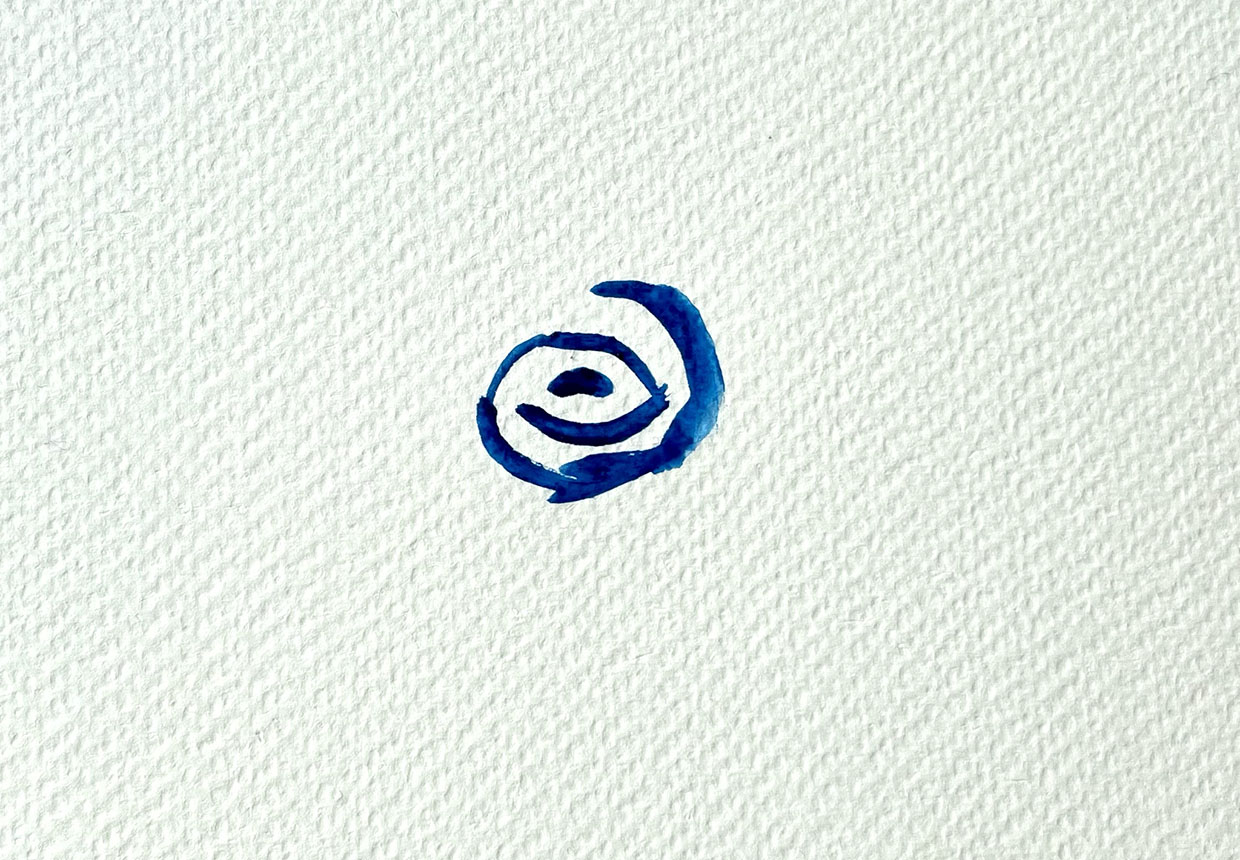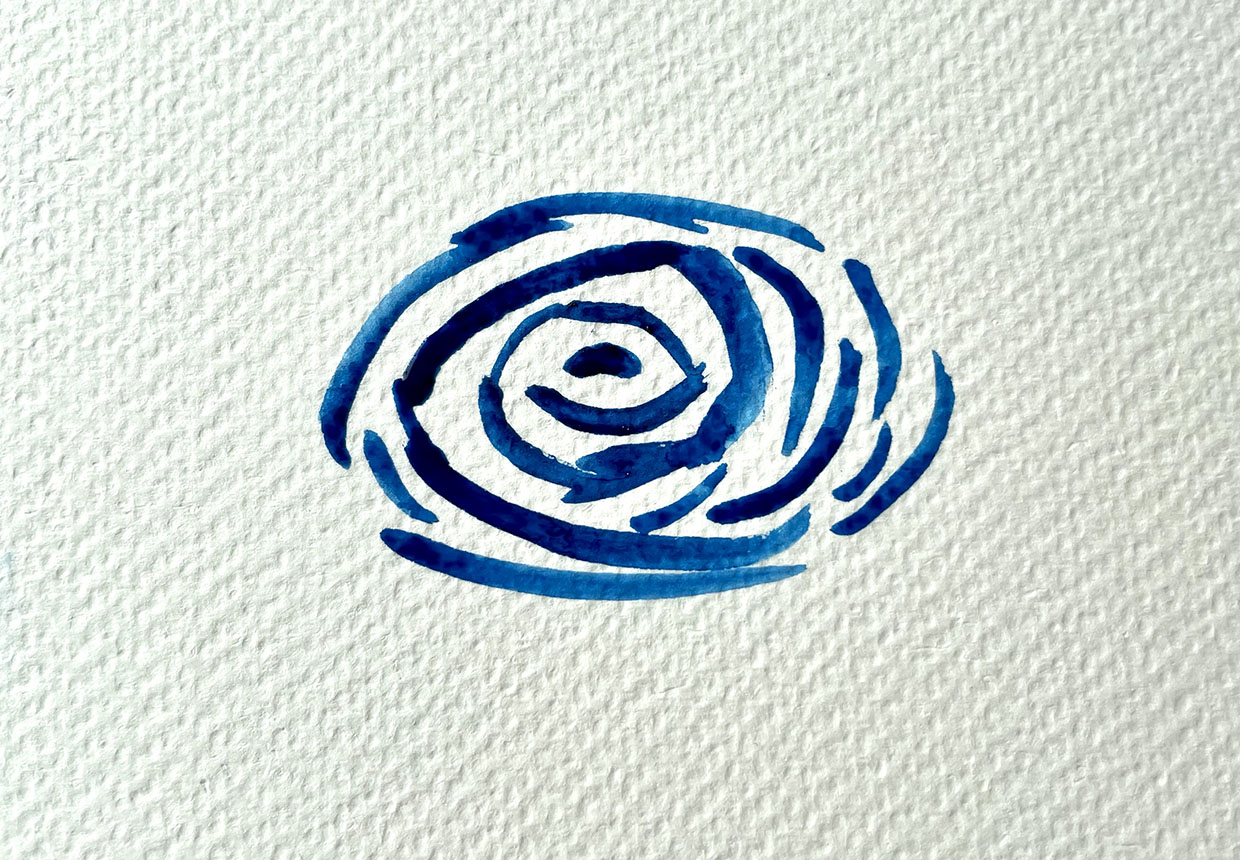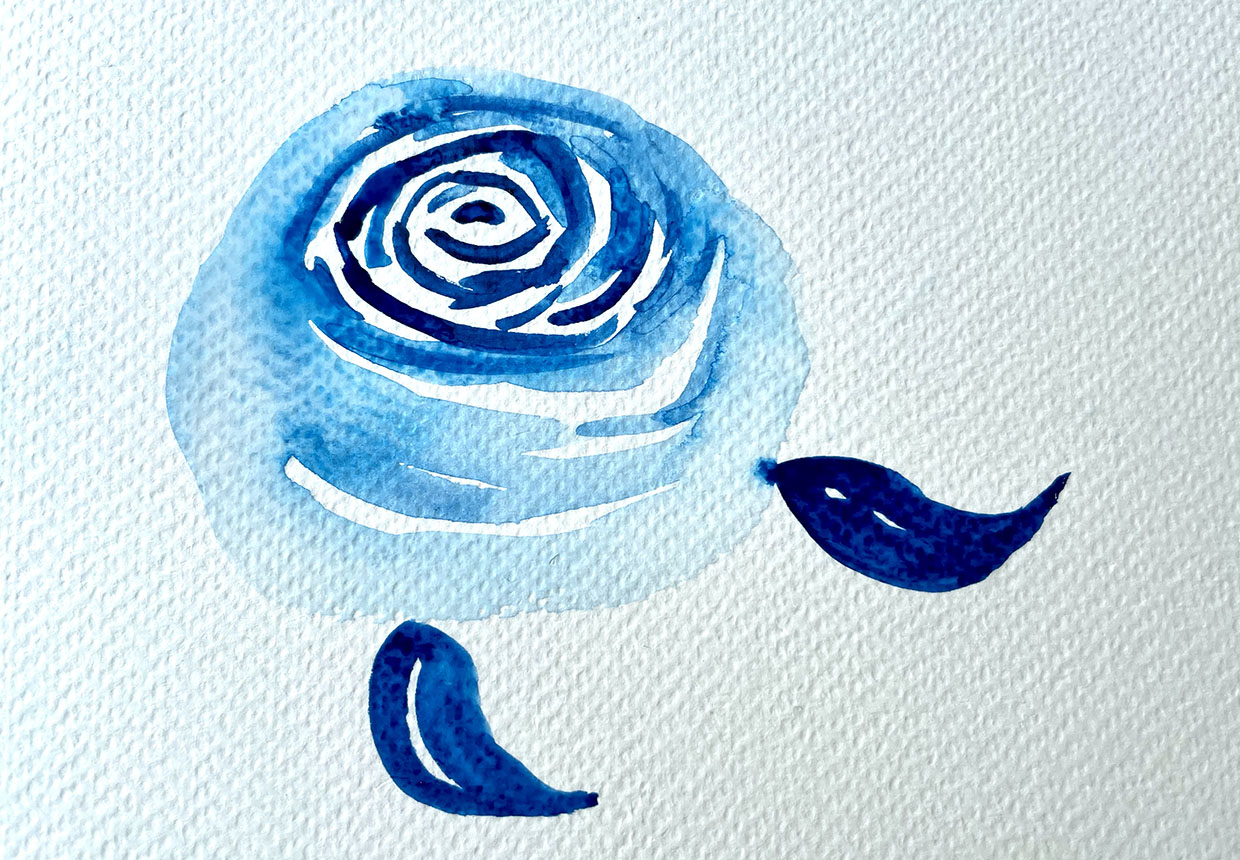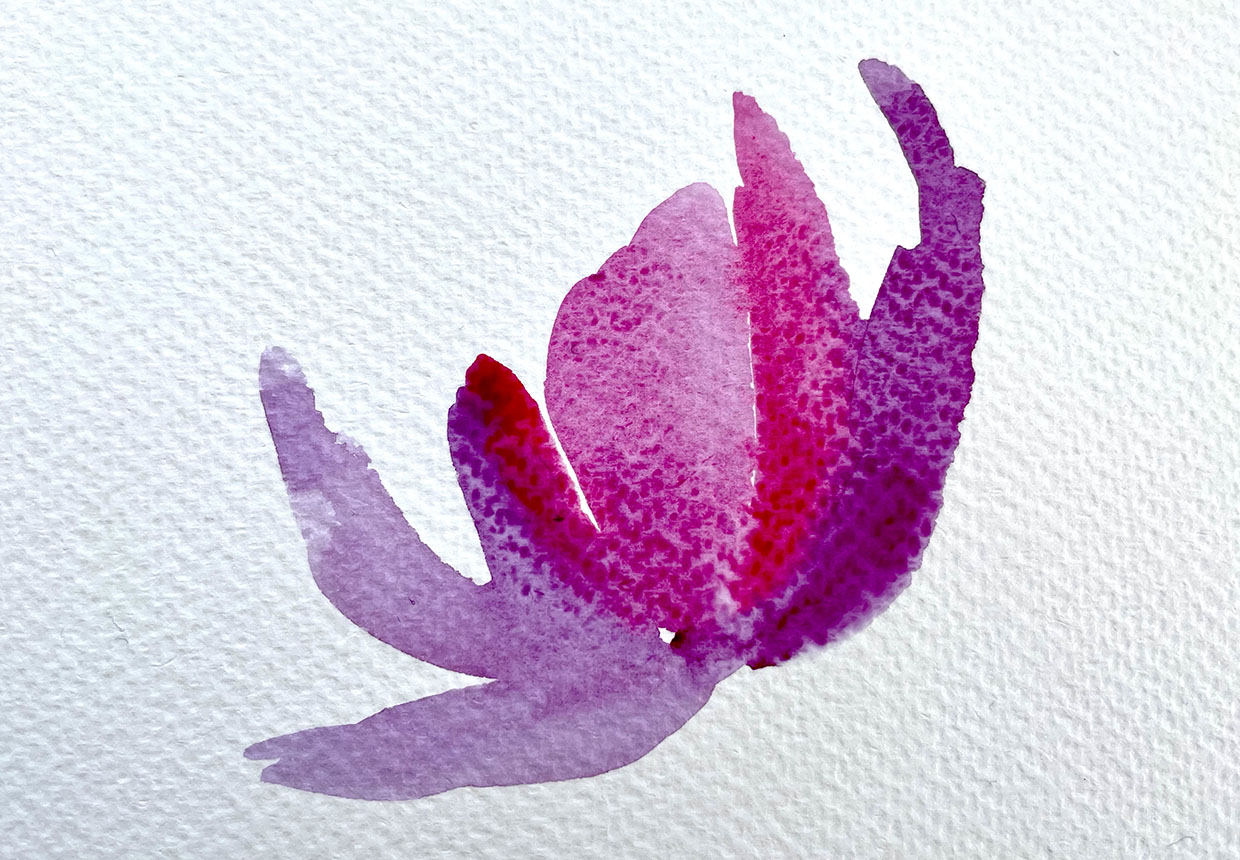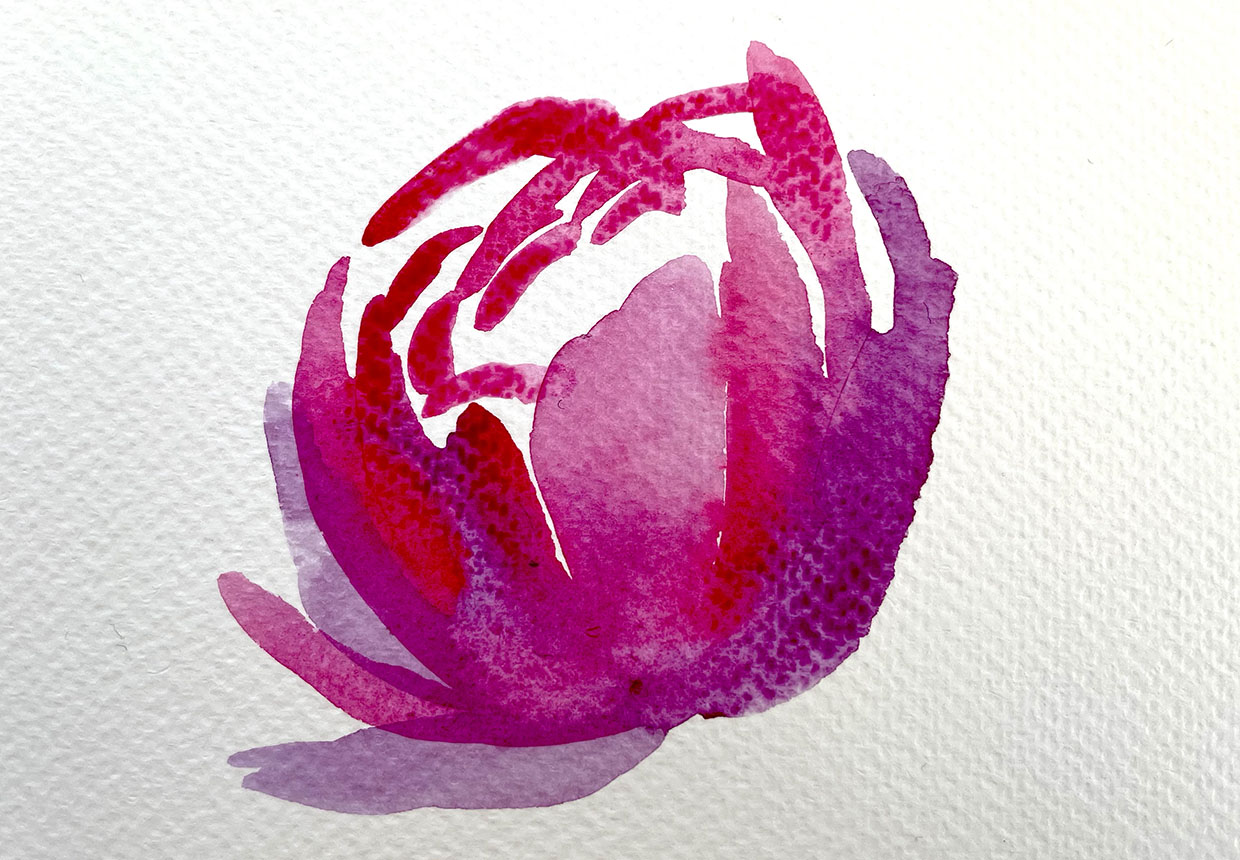Watercolor flowers are one of the best projects to to try if you want to get into watercolor painting. You'll be able to master the basics very quickly and you'll soon be making your own beautiful paintings.
Watercolor flowers are easy and immensely satisfying to paint. There are so many different kinds of flowers that you could potentially paint, from roses and poppies to primroses and geraniums. When you first start painting, you may find it useful to have some flowers to work from in front of you – or you might find it easier to work from photos.
You can paint realistic flowers (although that takes a bit of practice) or looser watercolor flowers which are quicker and look more like illustrations in appearance. Experiment and see what works for you! You'll begin to develop your own painting style and learn what works for you.
You can use your easy watercolor flower paintings to decorate your journals, to create cards for friends or as artwork to display on your wall. The whole process is deeply relaxing and it's a lovely way to spend an evening or an afternoon.
Looking for more watercolor inspiration? Check out our watercolor painting ideas for beginners, learn how to paint a watercolor galaxy or our how to use watercolor pencils guide.
In this easy watercolor flowers guide, we'll look at the basic techniques you'll need to master before you begin and what materials you'll need to get started. We'll be breaking everything down into clear steps for you to follow, so you'll be able to paint beautiful watercolor flowers even if you've never used these paints before. Feel free to adapt this watercolor tutorial and create your own designs!
You will need
Watercolor paints
For this easy watercolor flowers tutorial, I'll be using a set of Winsor and Newton Professional watercolor paints. I really love them because the quality and colors of the paints are so beautiful, and they're lightfast so they won't fade over time. The professional range is more expensive, but I've also used Winsor and Newton's Cotman range and they're great value for money.
Here are a couple of watercolor paint sets you could use for this:
- Buy the Winsor and Newton Cotman watercolor set from Amazon for £26.12
- Buy the Winsor and Newton Professional watercolor set from Cass Art for £49.95
You can find more recommendations on our best watercolor paints guide.
Watercolor paper
One of the biggest mistakes beginners make is using the wrong kind of paper for their watercolor paintings. If you try to use paper that's too thin, it won't absorb the water and will warp – which doesn't look great. Using watercolor paper will help reduce the chances of this happening and keep your paintings looking neat!
Here are some recommendations for watercolor paper pads for you to try:
- Buy the Winsor and Newton A4 watercolor paper pad from Amazon for £10.02
- Buy the Daler Rowney Simply Artists watercolor paper pad (pack of 2) from Amazon for £12.99
Watercolor paint brushes
Choosing the right brush can also make a big difference to the look of your finished painting. It's worth having at least one fine paintbrush in case you want to add some small details or slender stems to your flowers. These are also handy for painting tiny blooms and foliage.
If you're painting loose watercolor flowers, opt for a rounded brush – it'll help you to create the shapes of the petals more easily and prevent your painting from looking too precise. You want it to look relaxed and perhaps even a little untidy!
Here are a couple of brushes that I would recommend:
- Buy the Daler Rowney Graduate Spotter brush from Amazon for £3.95
- Buy the Pro Arte Prolene W3 brush set from Art Discount for £14.25
If you're looking for more paint brushes to buy, check out our best paint brushes for artists guide.
